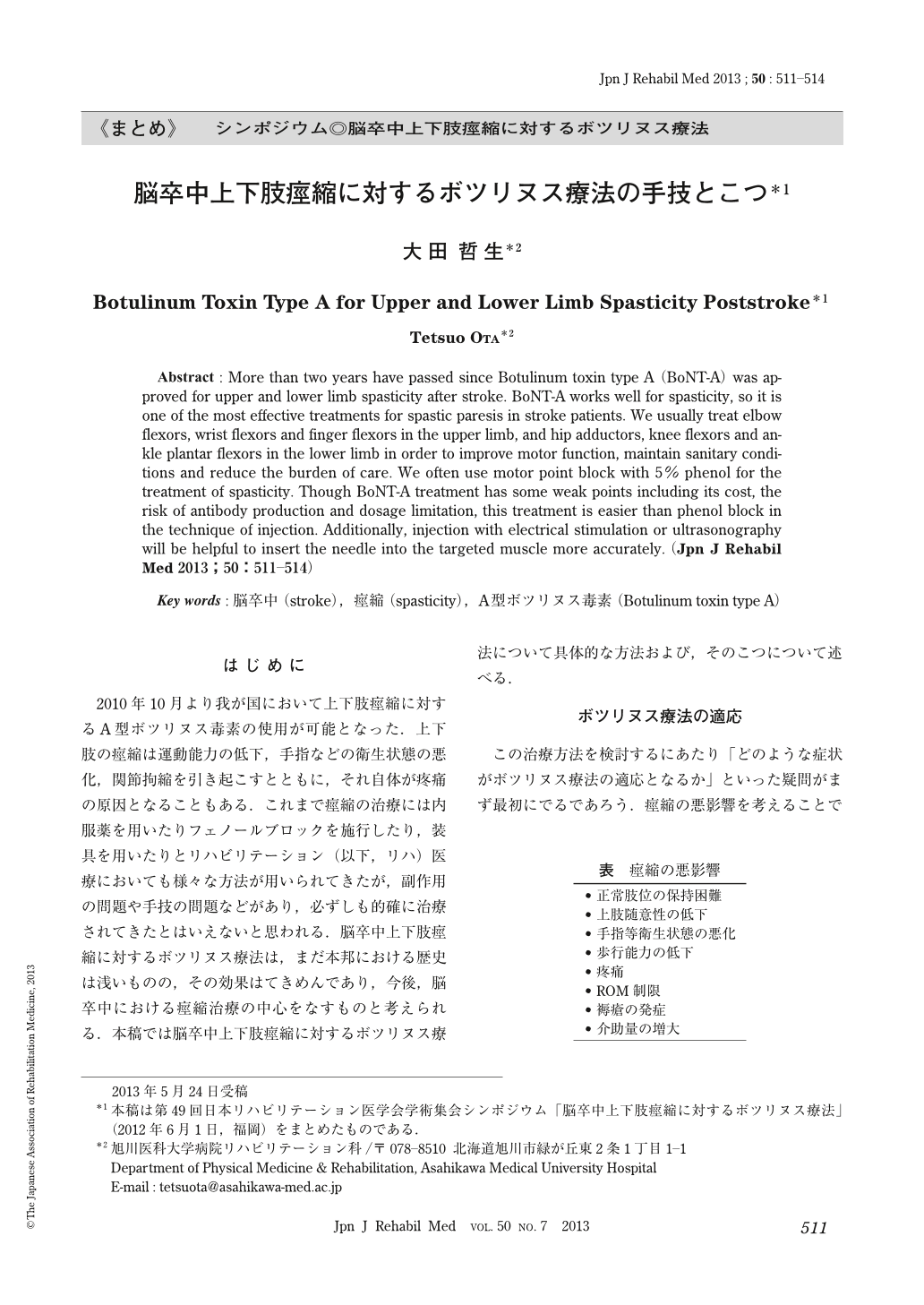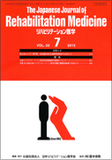Japanese
English
- 販売していません
- Abstract 文献概要
- 1ページ目 Look Inside
- 参考文献 Reference
はじめに
2010年10月より我が国において上下肢痙縮に対するA型ボツリヌス毒素の使用が可能となった.上下肢の痙縮は運動能力の低下,手指などの衛生状態の悪化,関節拘縮を引き起こすとともに,それ自体が疼痛の原因となることもある.これまで痙縮の治療には内服薬を用いたりフェノールブロックを施行したり,装具を用いたりとリハビリテーション(以下,リハ)医療においても様々な方法が用いられてきたが,副作用の問題や手技の問題などがあり,必ずしも的確に治療されてきたとはいえないと思われる.脳卒中上下肢痙縮に対するボツリヌス療法は,まだ本邦における歴史は浅いものの,その効果はてきめんであり,今後,脳卒中における痙縮治療の中心をなすものと考えられる.本稿では脳卒中上下肢痙縮に対するボツリヌス療法について具体的な方法および,そのこつについて述べる.
Abstract : More than two years have passed since Botulinum toxin type A (BoNT-A) was approved for upper and lower limb spasticity after stroke. BoNT-A works well for spasticity, so it is one of the most effective treatments for spastic paresis in stroke patients. We usually treat elbow flexors, wrist flexors and finger flexors in the upper limb, and hip adductors, knee flexors and ankle plantar flexors in the lower limb in order to improve motor function, maintain sanitary conditions and reduce the burden of care. We often use motor point block with 5% phenol for the treatment of spasticity. Though BoNT-A treatment has some weak points including its cost, the risk of antibody production and dosage limitation, this treatment is easier than phenol block in the technique of injection. Additionally, injection with electrical stimulation or ultrasonography will be helpful to insert the needle into the targeted muscle more accurately.

Copyright © 2013, The Japanese Association of Rehabilitation Medicine. All rights reserved.


